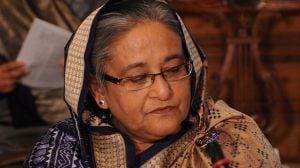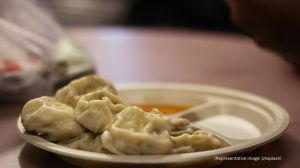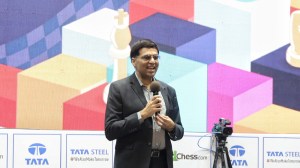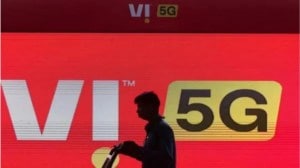Priya Kumari Shukla is a Senior Copy Editor in the Indian Express (digital). She contributes to the UPSC Section of Indian Express (digital) and started niche initiatives such as UPSC Key, UPSC Ethics Simplified, and The 360° UPSC Debate. The UPSC Key aims to assist students and aspirants in their preparation for the Civil Services and other competitive examinations. It provides valuable guidance on effective strategies for reading and comprehending newspaper content. The 360° UPSC Debate tackles a topic from all perspectives after sorting through various publications. The chosen framework for the discussion is structured in a manner that encompasses both the arguments in favour and against the topic, ensuring comprehensive coverage of many perspectives. Prior to her involvement with the Indian Express, she had affiliations with a non-governmental organisation (NGO) as well as several coaching and edutech enterprises. In her prior professional experience, she was responsible for creating and refining material in various domains, including article composition and voiceover video production. She has written in-house books on many subjects, including modern India, ancient Indian history, internal security, international relations, and the Indian economy. She has more than eight years of expertise in the field of content writing. Priya holds a Master's degree in Electronic Science from the University of Pune as well as an Executive Programme in Public Policy and Management (EPPPM) from the esteemed Indian Institute of Management Calcutta, widely recognised as one of the most prestigious business schools in India. She is also an alumni of Jamia Milia Islamia University Residential Coaching Academy (RCA). Priya has made diligent efforts to engage in research endeavours, acquiring the necessary skills to effectively examine and synthesise facts and empirical evidence prior to presenting their perspective. Priya demonstrates a strong passion for reading, particularly in the genres of classical Hindi, English, Maithili, and Marathi novels and novellas. Additionally, she possessed the distinction of being a cricket player at the national level. Qualification, Degrees / other achievements: Master's degree in Electronic Science from University of Pune and Executive Programme in Public Policy and Management (EPPPM) from Indian Institute of Management Calcutta ... Read More
UPSC Key—1st December, 2023: Manufacturing Sector, Defence Acquisitions Council and Governor as a Chancellor
Exclusive for Subscribers from Monday to Friday: Why Defence Procurement Procedure, Henry Kissinger and India are relevant to the UPSC Exam? What significance do topics like World Malaria Report 2023, Governor vs Vice-Chancellors, COP 28 and 2023 as warmest year, have for both the preliminary and main exams? You can learn more by reading the Indian Express UPSC Key for December 1, 2023.
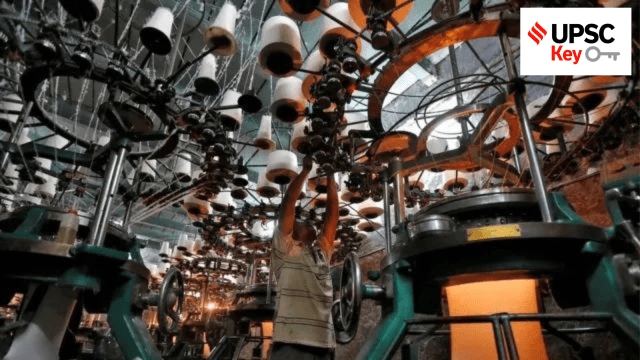 UPSC Key December 2023: Here's what you should be reading from the December 1, 2023 edition of The Indian Express
UPSC Key December 2023: Here's what you should be reading from the December 1, 2023 edition of The Indian Express Important topics and their relevance in UPSC CSE exam for December 1, 2023. If you missed the November 30, 2023 UPSC CSE exam key from the Indian Express, read it here
FRONT PAGE
Manufacturing pushes GDP growth rate to 7.6% in Q2
Syllabus:
Preliminary Examination: Economic and Social Development
Mains Examination: General Studies III: Indian Economy and issues relating to planning, mobilization, of resources, growth, development and employment.
Key Points to Ponder:
• What’s the ongoing story-THE ECONOMY sprung a surprise in July-September 2023-24, recording a 7.6 per cent growth in the second quarter, considerably higher than the consensus estimate. The surge was largely led by the manufacturing sector which jumped 13.9 per cent year-on-year in the second quarter, helped by a favourable base and improved volume growth, data released by the National Statistical Office (NSO) on Thursday showed.
• What data released by the National Statistical Office (NSO) on Thursday says about the economy?
• What is the role of manufacturing sector in gross domestic product?
• Manufacturing sector and GDP-Connect the dots
• What do you understand by the Real Gross Domestic Product (GDP)?
• How the Real Gross Domestic Product (GDP) is calculated?
• What is the difference between real GDP and nominal GDP?
• What is manufacturing sector?
• What are examples of manufacturing sector?
• What are other Economic sector?
• What National Statistical Office (NSO) said regarding manufacturing sector?
• What is National Statistical Office (NSO)?
• What is the main function of National Statistical Office (NSO)
• What are the Eight core sector industries in the Indian Economy?
• What is the weight/weightage of the different core sectors in the Index of Industrial Production?
• For Your Information- With the latest print, GDP growth during the first half of the year — April-September 2023 — added up to 7.7 per cent compared with 9.5 per cent in the year-ago period. The GDP had recorded a four-quarter high growth of 7.8 per cent in April-June this year, and had grown 6.2 per cent in July-September 2022. Chief Economic Adviser V Anantha Nageswaran said overall investment and consumer sentiment will underpin solid momentum in the current and next financial years. “In terms of projections, these numbers impart a certain upside to 6.5 per cent estimate for real GDP growth in the current year, but we will have to work the numbers to see what kind of upside the current numbers impart for the full year estimates. Until then we will keep the estimate at 6.5 per cent, except to signal that we are now probably more comfortable with this number than we were before,” he said.
THE Indian economy fired up in July-September on the back of robust spending by the Union as well as state governments. Most sectors recorded impressive growth, and continuing this momentum will be a challenge in the second half of the year given the weak agri outlook, normalising base, and tepid global growth.
Government-led capital expenditure was a major driver of growth in the second quarter, with Government Fixed Capital Formation (GFCF) — a proxy for investments — jumping 11.04 per cent as against 8 per cent growth in the first quarter. Meanwhile, Government Final Consumption Expenditure (GFCE) grew at 12.4 per cent in July-September as against a 0.7 per cent contraction in the first quarter.
Consumption demand, as reflected in private final consumption expenditure (PFCE), recorded a slower pace of growth at 3.1 per cent compared with a 6 per cent growth in the first quarter. Reflecting this, private consumption expenditure, as a share of GDP, reduced to 56.8 per cent of GDP in July-September from 59.3 per cent in the year-ago period, even as government expenditure increased to 8.9 per cent of GDP from 8.6 per cent.
Meanwhile, Gross Fixed Capital Formation (GFCF) — a proxy for investments — jumped 11.04 per cent in July-September FY24 as against 8 per cent growth in the first quarter.
Other Important Articles Covering the same topic:
📍ExplainSpeaking: Why Indian manufacturing’s productivity growth is plummeting and what can be done
West may praise his diplomatic triumphs but not many tears will be shed in India
Syllabus:
Preliminary Examination: Current events of national and international importance.
Mains Examination:
• General Studies I: History of the world will include events from 18th century such as industrial revolution, world wars, redrawal of national boundaries, colonization, decolonization, political
philosophies like communism, capitalism, socialism etc.— their forms and effect on the society.
• General Studies I: Post-independence consolidation and reorganization within the country.
Key Points to Ponder:
• What’s the ongoing story- Henry Kissinger, who served as the National Security Advisor and Secretary of State to two US Presidents — Richard M Nixon and Gerald R Ford — between 1969 and 1977, has died at the age of 100.
• Personality in News-Henry Kissinger
• Why Henry Kissinger regarded by the West as its most famous diplomat in the 20th century, and by China as their “friend”?
• Why Henry Kissinger will be remembered in geopolitics?
• “There is no doubt that Kissinger played a significant part in global diplomacy in the 1960s and 1970s”-Highlight his contributions
• “While the West feted him as a statesman and a strategist, his record with India is less savoury”-Why so?
• Henry Kissinger and India-Connect the dots
• Do You Know-After the Nixon administration took office, Kissinger prioritised relations with Pakistan over India. He was instrumental in pressing for significant military and economic assistance during President Yahya Khan’s visit to Washington in October 1970. In May 1971, when India confronted its most significant national security crisis in living memory after ten million refugees from East Pakistan poured into India as a result of the atrocities by the Pakistani military, Nixon and Kissinger were more intent on securing Pakistan’s help in establishing ties with China rather than in compelling the Pakistani regime to stop the carnage at home.
Despite the widespread international reportage of the genocide, Nixon wrote to Yahya Khan on May 7, 1971, to “understand the anguish you must have felt in making the difficult decisions you have faced.” Although Kissinger had personally seen the Nazi persecution of the Jewish community in Germany, from where he finally fled in 1938, he showed neither compassion for the people of East Pakistan nor contrition for America’s unwavering support to the Pakistani regime’s activities until the bitter end.
Kissinger continually acted in a deceitful manner so far as India was concerned. In July 1971, during his visit to India on the eve of his secret visit to China, he told P N Haksar, Principal Secretary to the Prime Minister, that the US would “under any conceivable circumstances” back India against Chinese pressure. He never disclosed that he intended to visit China only days later to normalise relations. He also told External Affairs Minister Swaran Singh that the US had only “disinterested concern in the balance of national or political forces within South Asia”. In reality, he was doing everything possible to sustain the Pakistani genocide in future Bangladesh and assist Pakistan in dealing with India. When the Bangladesh crisis worsened, Kissinger advised Nixon to “introduce the question of what would happen to our (American) aid if India attacked Pakistan”, during Prime Minister Indira Gandhi’s visit to Washington in November 1971, in a transparent attempt to blackmail India. When the war began, Kissinger, on the one hand, routed military equipment to Pakistan through its middle-eastern allies and on the other, suspended all economic assistance to India. His instructions were specific — a case was to be made, technically and legally, to differentiate between the aid given to India from the aid given to Pakistan.
His most perfidious actions were his efforts to put pressure on India through the Chinese. Even before the conflict started, Kissinger met the Chinese Ambassador to the United Nations, Huang Hua, on November 23, 1971, to propose that they coordinate action in the UN Security Council on the India-Pakistan issue so that the US “not move too far away from you (China) on this issue”. It was also at this meeting that Kissinger (and George H W Bush, later the President of the United States) shared the specific location of Indian military units deployed along the frontier with East Pakistan, as well as crucial information that India had diverted two mountain divisions from the China front to East Pakistan. He even offered to send further specific information “in a sealed envelope to the hotel if you want us to”. This was but a prelude to Kissinger’s subsequent actions during the Bangladesh war.
Other Important Articles Covering the same topic:
GOVT & POLITICS
DAC nod to buy 97 Tejas jets, 156 combat helicopters
Syllabus:
Preliminary Examination: Current events of national and international importance.
Mains Examination:
• General Studies III: Achievements of Indians in science & technology; indigenization of technology and developing new technology.
• General Studies III: Security challenges and their management in border areas – linkages of organized crime with terrorism.
Key Points to Ponder:
• What’s the ongoing story-The Defence Acquisition Council (DAC) Thursday cleared the procurement of 97 Light Combat Aircraft Tejas Mk 1 A and 156 Light Combat Helicopters from Hindustan Aeronautics Limited among other big-ticket acquisitions worth Rs 2.23 lakh crore.
• Defence Acquisition Council-About, Role and Functions
• Why Defence Acquisitions Council was created?
• Do You Know-The DAC is among the top bodies for clearing major capital acquisitions for defence. The Defence Acquisition Council, which is headed by the Defence Minister, is among the top bodies for clearing major capital acquisitions for defence. The Acceptance of Necessity is only the first step in the long defence procurement process. Grant of an AoN does not necessarily lead to a final order. The AoN is only the first step in the long defence procurement process; it does not necessarily lead to a final order.
Both the orders were already in the pipeline. While addressing the media in October, IAF Chief Air Chief Marshal V R Chaudhari had said the contract for the additional 97 Tejas Mk 1A jets is expected to be signed by the end of the year. The fighter jets will be an addition to the 83 jets ordered for the IAF in February 2021.
The IAF and the Army had raised a squadron each of the indigenous LCH, which was named Prachand. Of the 156 additional LCH to be procured, 90 are likely to be for the Army and 66 for the IAF.
The DAC also cleared the proposal to upgrade part of its Su-30 MKI fighter jets indigenously from HAL.
Additionally, to replace the Indian Field Gun, which has completed its service life, the DAC cleared procurement of indigenous Towed Gun System (TGS), which is set to become the mainstay of the Indian artillery.
Procurement of 155 mm nubless projectiles for use in 155 mm artillery guns of the Army to enhance their potency were also cleared by the DAC. Moreover, AoNs for procurement and integration of Automatic Target Tracker and Digital Basaltic Computer for T-90 tanks of the Army, Medium Range Anti-Ship Missiles for the Navy were granted by the DAC.
• What is Defence acquisition?
• Why Defence Procurement Procedure (DPP)?
• Defence Procurement Procedure (DPP)-know its key features
• How much India spends in defence as compared to other sectors?
• What is budget for defence imports?
• What Stockholm International Peace Research Institute (SIPRI) says about India’s defence and defence expenditure?
• When it comes to defence exports then why exports of defence products from India are limited to few countries like Vietnam?
• India can recalibrate not reduce the defence expenditure-do you agree?
Other Important Articles Covering the same topic:
📍Defense Acquisition Procedure
Malaria cases continue to dip in India, up globally: WHO report
Syllabus:
Preliminary Examination: Economic and Social Development
Mains Examination: General Studies II: Issues relating to development and management of Social Sector/Services relating to Health, Education, Human Resources.
Key Points to Ponder:
• What’s the ongoing story– Contrasting the global trend, India continued to witness a decline in malaria cases and deaths in 2022, according to a new WHO report released Thursday. There were around 33 lakh malaria cases and 5,000 deaths in India last year, a decrease of 30% and 34 % respectively compared with 2021.
• What exactly WHO report said?
• Malaria, Anopheles mosquito and malarial parasite-know about them
• Which organisation releases World Malaria Report (WMR)?
• National Strategic Plan for Malaria elimination-Key Features
• Know about Annual Parasite Index
• What is the Mosquirix vaccine?
• Why it took so long to develop the Malaria vaccine?
• Global disease burden and Impact of Malaria in India-Know about it
• What are the Government Steps to curb Malaria?
• How India brought down numbers with a three-pronged strategy?
• Has climate change had a role in the spread of malaria?
• Why is there still a need for improved surveillance?
• What are the challenges for India?
• For Your Information-According to the World Malaria Report 2023, the number of malaria cases globally had plateaued over the last decade or so — down from 243 million in 2000 to 233 million in 2019 — and increased during the pandemic. In 2020, the first year of the pandemic, there were 11 million more cases. The figures remained the same in 2021 only to increase in 2022.
The number of global malaria deaths was also higher: 608,000 deaths in 2022 compared with 576,000 in 2019.
“This is due to good preventive and case management strategies and availability of effective vector control tools as well as point of care diagnostics and prompt treatment at community level,” said Dr Neena Valecha, former director of National Institute of Malaria Research.
Other Important Articles Covering the same topic:
EXPRESS NETWORK
2023 is hottest year ever, says WMO report
Syllabus:
Preliminary Examination: General issues on Environmental ecology, Bio-diversity and Climate Change – that do not require subject specialization.
Mains Examination: General Studies III: Conservation, environmental pollution and degradation, environmental impact assessment.
Key Points to Ponder:
• What’s the ongoing story-It is official now. The year 2023 is all set to be the warmest year ever, the World Meteorological Organisation (WMO) has said, as climate negotiators and world leaders began their discussions at the annual climate change conference, COP28, in Dubai.
• “The year 2023 is all set to be the warmest year”-What are the reasons?
• What are the role of carbon dioxide, methane and nitrous oxide in an environment?
• What is the meaning of ocean heat content?
• For Your Information-Global average temperatures till October this year were about 1.4 degree Celsius higher than pre-industrial average, considerably more than the previous hottest year 2016 which was about 1.29 degree Celsius warmer. The gap is so large that data from November and December is unlikely to prevent 2023 from becoming the warmest ever, the WMO said.
But that wasn’t the only bit of reality check that the WMO decided to offer to world leaders who have assembled in Dubai to make, possibly the last effort to prevent long-term breach of the 1.5 degree Celsius warming threshold.
In its provisional State of the Global Climate report, an annual publication that it released at the COP meetings, the WMO said that the observed concentrations of the three main greenhouse gases – carbon dioxide, methane and nitrous oxide — were at their highest in 2022, the last year for which detailed data is available, and there were indications that these concentrations continued to increase in 2023 as well.
Further, ocean heat content as well as global mean sea levels were at record highs, while the Antarctic sea-ice extent was at its lowest ever.
Four months this year — June, July, August and September — broke previous respective monthly records for the highest temperature and July happened to become the warmest month ever.
“The long-term increase in global temperatures is due to the increased concentrations of greenhouse gases in the atmosphere. The shift from La Nina (phenomenon in Pacific Ocean), which lasted from mid-2020 to early 2023, to fully developed El Nino conditions by September 2023, likely explains some of the rise in the temperature from 2022 to 2023. However, some areas of unusual warming such as the Northwest Atlantic do not correspond to typical patterns of warming or cooling associated with El Nino. Other factors, which are still being investigated, may also have contributed to the exceptional warming from 2022 to 2023,” the WMO said in its State of the Global Climate Report.
In the previous version of this report, in 2022, the WMO had said that there was at least a 50 per cent chance that the 1.5 degree Celsius threshold would be crossed before 2026 and that it was almost certain that one of the years till 2027 would turn out to be the warmest ever.
The second prediction is coming true in 2023 itself and there were fears that the year might breach the 1.5 degree Celsius warming threshold as well. But the WMO assessment is that this year would only end up being about 1.4 degree Celsius warmer than the pre-industrial average.
However, it is only a matter of time before the 1.5 degree threshold is breached. It has already been breached repeatedly for daily average temperatures, at least 86 times till October this year, and weekly average temperatures have also topped the limit.
The world is nowhere close to the kind of climate actions, including greenhouse gas emission cuts, that science says need to be taken by 2030 to prevent a long-term breach of the 1.5 degree threshold.
The COP28 provides one last opportunity for the countries to strengthen climate actions in the immediate term and get as close to the required levels by 2030 as is possible.
• “The world remains divided between the historically responsible and the contemporary accused who believe they are being asked to pay”-Analyse
• “The most important, and keenly awaited, outcome from the perspective of 1.5 degree Celsius target is an agreement on tripling of global renewable energy installed capacity by 2030”-Discuss
• “The resource deficit is real on account of the gap between requirement and availability. It exemplifies the trust deficit”-Do you agree?
• What is Global Financial Stability Report?
• What is the Kyoto Protocol?
• What were the key takeaways from the Kyoto Protocol?
• What is the Paris Agreement and its purpose?
• Paris Agreement and Kyoto Protocol-Know the difference
• What is ‘common but differentiated responsibilities’?
• Which agreement recognised ‘common but differentiated responsibilities’?
• What is the Carbon Border Adjustment Mechanism (CBAM)?
• Why 1.5 degrees Celsius temperature rise is considered an important threshold?
Other Important Articles Covering the same topic:
📍COP28 begins today: India’s role at the climate conferences over the years, key promises, red lines
📍$475 mn pledged to climate disaster fund in good start to meet
SC: Governors acting as Chancellor not bound by advice of ministers
Syllabus:
Preliminary Examination: Indian Polity and Governance-Constitution, Political System, Panchayati Raj, Public Policy, Rights Issues, etc.
Mains Examination: General Studies II: Appointment to various Constitutional posts, powers, functions and responsibilities of various Constitutional Bodies.
Key Points to Ponder:
• What’s the ongoing story– Governors acting in their statutory capacity as University Chancellor are not bound by the aid and advice of the council of ministers, the Supreme Court ruled on Wednesday.
A three-judge bench presided by Chief Justice of India D Y Chandrachud reiterated the position while quashing the reappointment of Gopinath Ravindran as Vice-Chancellor of Kannur University.
• What exactly supreme Court said?
• For Your Information-According to the Supreme Court, “In… a situation” where “the statute makes a clear-cut distinction between two distinct authorities, namely, the Chancellor and the State Government… the same must also be interpreted distinctly, and while dealing with the case of the Vice-Chancellor, the Governor, being the Chancellor of the University, acts only in his personal capacity, and therefore, the powers and duties exercised and performed by him under a statute related to the University, as its Chancellor, have absolutely no relation to the exercise and performance of the powers and duties by him while he holds office as the Governor of the state”, the bench, also comprising Justices J B Pardiwala and Manoj Misra, said.
Discussing whether Kerala Governor Arif Mohammed Khan in his role as Chancellor abdicated or surrendered the statutory power vested on him under the Kannur University Act, 1996, Justice Pardiwala said, “It is a well-settled (and indeed, bedrock) principle of administrative law that if a statute expressly confers a statutory power on a particular body or authority or imposes a statutory duty on the same, then such power must be exercised or duty performed (as the case may) by that very body or authority itself and none other. If the body or authority exercises the statutory power or performs the statutory duty acting at the behest, or on the dictate, of any other body or person, then this is regarded as an abdication of the statutory mandate and any decision taken on such basis is contrary to law and liable to be quashed.”
The judgment read: “Rule of law requires that a statutory power vests in the body or authority where the statute so provides, and likewise, the discharge of the statutory duty is the responsibility of the body or authority to which it is entrusted. That body or authority cannot merely rubber-stamp an action taken elsewhere or simply endorse or ratify the decision of someone else.”
• Governor vs Vice-Chancellors-what was the case in Kerala?
• In General, the Governor is Chancellor of which all universities in the state?
• What are the governor’s responsibilities as Chancellor of a University?
• Does the Governor have discretion in his capacity as Chancellor?
Other Important Articles Covering the same topic:
📍Explained: Role of Governor in Public Universities
THE IDEAS PAGE
Syllabus:
Preliminary Examination: Current events of national and international importance.
Mains Examination: General Studies II: Effect of policies and politics of developed and developing countries on India’s interests, Indian diaspora.
Key Points to Ponder:
• What’s the ongoing story-Feroze Varun Gandhi writes: Any further dilution of India’s historic and principled stand would be detrimental to our long-term aspirations, leadership of Global South and our strategic interests in West Asia.
• A surprise attack by Hamas on Israel-what you know so far?
• What is ‘Operation Al-Aqsa Flood’?
• Israel-Palestine Conflict-what you know about the same?
• Do You Know- The land of Israel, as well as Judah and Palestine, has witnessed multiple settlements from various tribes. Before 4500 BCE, it was inhabited by different hunter-gatherer tribes, who slowly gave way to farmers and herders. Between 4500 and 3500 BCE, there is evidence of early metal-working and farming, with city-state formation (including the establishment of Jerusalem) by 2500 BCE and a local hegemony was established by Egypt. Egyptian control gave way due to political turmoil and invasions/migrations by the Sea Peoples between 1300 and 1200 BCE. Over time, the Israelite culture grew out of the existing Canaanite civilisation, establishing the Kingdom of Israel and the Kingdom of Judah by 11th century BCE. This kingdom, once unified, was weakened and destroyed by invasions from the Assyrian empire, with Jewish revolts leading to the destruction of Solomon’s temple and the exile of Jews to Babylon. Such exile also came with the evolution of Judaism into a monotheistic religion. The fall of Babylon to the Achaemenid Empire in 538 BCE led to the Edict of Cyrus, allowing Jews to return to Judah. The Second Temple was constructed, along with a rebuilding of Jerusalem. By the 4th century, the Greeks under Alexander conquered the land, followed by numerous revolts (such as the Maccabean revolt) and the Romans. The destruction of the Second Temple in the 1st Century BCE and a push by the Roman Empire to expel Jews created the Jewish diaspora. The events leading to the Holocaust, Jewish mass immigration and the rise of the Zionist movement, led to the establishment of the state of Israel in 1948. Israel is now here to stay. It deserves a right to exist.
However, the Palestinians have historic rights to the land as well — with established genetic links to ancient Canaanites. The establishment of Islam in the Middle East by the late 6th century led to a long period of dominance by various Islamic empires (Umayyad Caliphate, Abbasid Caliphate, Fatimid Caliphate, Mamluk and Ottoman empires), interspersed by the Crusades. This led to the Arabisation of local Palestinians, based on linguistic and cultural similarities. In 1919, Palestinian Muslims and Christians constituted 90 per cent of Palestine’s population. In 1922, following World War I, Palestine was made a mandate of Great Britain. In 1948, about 7,00,000 Palestinians were expelled and forced to migrate from the land of Israel/Palestine, with their right to return denied and the creation of a permanent stateless people. This event, the Nakba, is considered a collective trauma by Palestinians, helping to shape their national identity and political aspirations. The Palestinians should have a right to return.
This is a complex issue. The state of Israel arose driven by the Holocaust: Six million European Jews were systematically murdered under the heinous Nazi regime in Germany and its occupation of Europe. A genocide of Jews has led to the forced migration of Palestinians, creating a vicious cycle between Israeli settlements expanding and Palestinian homes smouldering, while attacks continue unabated on innocent Israelis and Israeli Arabs getting caught up in between. Israel, stuck between Hezbollah and Hamas, has retaliated to rocket attacks and kidnappings. But these attacks themselves have been provoked by Israel’s policy of discouraging Palestinian aspirations. Various solutions have been offered — the land for peace formula, a confederation between Jordan and the West Bank, an independent Gaza, and outright annexation/settlement by Israel of remaining Palestinian territories — none of them have proved satisfactory at restoring peace and amity between Israel and the Palestinians. More recently, the Abraham Accords have sought to break the jinx by establishing diplomatic relations between select Arab states and Israel. However, the conflict continues.
• “India’s policy towards Israel and Palestine has historically been a principled one”-Comment
• What is India’s political attitude towards Israel?
• What is India’s political attitude towards Palestine?
• India’s position on the Israel-Palestine issue-What you know about this so far?
• India has supported a negotiated two-state solution-What is two-state solution?
Other Important Articles Covering the same topic:
📍Explained: How has India’s policy on Israel and Palestine evolved over time?
📍How India-Israel ties progressed: from Palestine-leaning to a strategic embrace of the Jewish nation
EXPLAINED
The Pannun problem in India-US ties
Syllabus:
Preliminary Examination: Current events of national and international importance
Mains Examination: General Studies II: Bilateral, regional and global groupings and agreements involving India and/or affecting India’s interests.
Key Points to Ponder:
• What’s the ongoing story– India and the US are confronted with a major diplomatic challenge, as an Indian intelligence official stands accused of orchestrating a plot to kill Khalistan separatist Gurpatwant Singh Pannun in New York.
The official in question has not been named in the US Justice Department’s indictment, identified only as CC-1, the chief conspirator.
• What exactly United States federal prosecutors have accused?
• How recent US allegation can impact India’s geopolitical structure?
• How India has reacted?
• Who is Damian Williams?
Other Important Articles Covering the same topic:
📍Damian Williams: Meet the DoJ face in foiled ‘plot’ case
For any queries and feedback, contact priya.shukla@indianexpress.com
The Indian Express UPSC Hub is now on Telegram. Click here to join our channel and stay updated with the latest Updates.
Subscribe to our UPSC newsletter and stay updated with the news cues from the past week.
UPSC Magazine
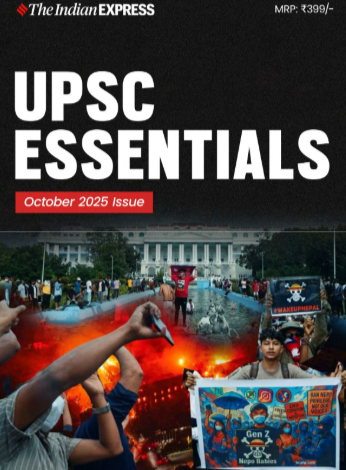
Read UPSC Magazine
Photos



- 01
- 02
- 03
- 04
- 05









